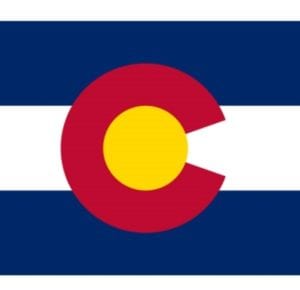Fire Behavior
View article.
We found three-fold differences in mean Daily Area Burned among 10 North American ecoregions, ranging from 260 ha day-1 in the Marine West Coast Forests to 751 ha day-1 in Mediterranean California. Ecoregional extreme thresholds ranged from 3,829 ha day-1 to 16,626 ha day-1, relative to a continental threshold of 7,173 ha day-1. The ~3% of events classified as extreme cumulatively account for 16–55% of total area burned among ecoregions. We observed four-fold differences in mean fire duration, ranging from 2.7 days in the Great Plains to 10.5 days in Northwestern Forested Mountains. Regions with shorter fire durations also had greater daily area burned, suggesting a paradigm of fast-growing short-duration fires in some regions and slow-growing long-duration fires elsewhere. CWD had a weak positive relationship with spread rate and extreme thresholds, and there was no pattern for AET. Discussion: Regions with shorter fire durations had greater daily area burned, suggesting a paradigm of fast-growing short-duration fires in some regions and slow-growing long-duration fires elsewhere. Although climatic conditions can set the stage for ignition and influence vegetation and fuels, finer-scale mechanisms likely drive variation in daily spread. Daily fire progression offers valuable insights into the regional and seasonal distributions of extreme single-day spread events, and how these events shape net fire effects.
Learn more about FASMEE in this video (8:26).
Fire and smoke researchers collaborated with land managers to “learn and burn” from a unique, high-intensity prescribed fire that was conducted to restore aspen forests on the Fishlake National Forest in southern Utah. Led by the Pacific Northwest Research Station, researchers from many agencies and institutions worked with fire managers to safely collect data on fire behavior, smoke composition and transport, soil dynamics, and forest ecology, with the ultimate goal of improving models used for fire and smoke management. This partnership is called the Fire and Smoke Model Evaluation Experiment (FASMEE).
View recording (53:53).
Okay. Let me go back. Okay. So let’s go back to not even a year ago, August eighth two thousand twenty three. You know, large wildfires hit western and central Maui, and, it killed at least a hundred people and resulted in three to six billion dollars of damage, mainly in the area of of the historic town of Lahaina.
And and this here’s a picture right here of just a portion of Lahaina. This one famous house survived. We could talk about that maybe. But we’re looking in this picture towards the towards the east. These are the West Maui mountains there. You can see some of the some of the grassy areas that that would that burned there and here’s the town.
View article.
Large forest fires have far-reaching impacts on the environment, human health, infrastructure and the economy. Forest fires become large when all forest types across a landscape are dry enough to burn. Mesic forests are the slowest to dry and can act as a barrier to fire growth when they are too wet to burn. Therefore, identifying the factors influencing fire occurrence in mesic forests is important for gauging fire risk across large landscapes. We quantified the key factors influencing the likelihood that an active wildfire would propagate through mesic forest. We analyzed 35 large forest fires (> 2500 ha) that occurred in Victoria, Australia where mesic and drier eucalypt forests are interspersed across mountainous terrain. We used a random forest model to evaluate 15 meteorological, topographic and disturbance variables as potential predictors of fire occurrence. These variables were extracted for points within burnt and unburnt patches of mesic forest. The likelihood of an active wildfire spreading through mesic forest increased by 65 % as vapor pressure deficit (VPD, i.e., atmospheric dryness) rose from 2.5 to 7 kPa. Other variables had substantially less influence (< 20 % change in fire occurrence) and their effects were further reduced when VPD was very high (> 6.5 kPa). Mesic forests were less likely to burn in areas with lower aridity, shallower slopes, and more sheltered topographic positions. Mesic forests 13–15 years following stand-replacing disturbance had 6 % higher chance of burning than long undisturbed forests (50 years post-disturbance). Overall, we show that topography and disturbance history cannot substantially counter the effects of high VPD. Therefore, the effectiveness of mesic forest as a barrier to the development of large forest fires is weakening as the climate warms. Our analysis also identifies areas less likely to burn, even under high VPD conditions. These areas could be prioritized as wildfire refugia.
World of Wildland Fire brings you short videos on fire weather and fire behavior relationships.
Conference webpage.
The 2024 Meeting the Moment Conference will be October 1-4, 2024 at Viewline Resort Snowmass, 100 Elbert Ln, Snowmass Village, CO 81615.
Workshop registration, closes May 15.
In Colorado, the Front Range can present unique fuel and weather conditions for wildfires. Combined with numerous wildland/urban interface and intermix settings, these conditions can be critical in wildfire management.
Register now for the Front Range Grassland Fire Workshop to increase your knowledge and understanding of the ecology, behavior, risks, and management of grassfire conditions on the Front Range.
Hear speakers from both the Front Range and the Great Plains to discuss grassland fire.
Information Packet (agenda, speaker bios, hotel, parking)
View article.
We examined the hourly diurnal cycle of 23,557 fires and identified 1,095 overnight burning events (OBEs, each defined as a night when a fire burned through the night) in North America during 2017–2020 using geostationary satellite data and terrestrial fire records. A total of 99% of OBEs were associated with large fires (>1,000 ha) and at least one OBE was identified in 20% of these large fires. OBEs were early onset after ignition and OBE frequency was positively correlated with fire size. Although warming is weakening the climatological barrier to night-time fires6, we found that the main driver of recent OBEs in large fires was the accumulated fuel dryness and availability (that is, drought conditions), which tended to lead to consecutive OBEs in a single wildfire for several days and even weeks. Critically, we show that daytime drought indicators can predict whether an OBE will occur the following night, which could facilitate early detection and management of night-time fires. We also observed increases in fire weather conditions conducive to OBEs over recent decades, suggesting an accelerated disruption of the diurnal fire cycle.
Burn Plan Event information and registration.
Event flyer to forward to others.
Join us in the field to discuss prescription burn planning, treatments, monitoring, and results with Duncan Leao, Steve Howell, and Ali Paulson, USFS. This is an informal discussion open to all.
View article.
Fuel-treatments targeting shrubs and fire-prone exotic annual grasses (EAGs) are increasingly used to mitigate increased wildfire risks in arid and semiarid environments, and understanding their response to natural factors is needed for effective landscape management. Using field-data collected over four years from fuel-break treatments in semiarid sagebrush-steppe, we asked 1) how the outcomes of EAG and sagebrush fuel treatments varied with site biophysical properties, climate, and weather, and 2) how predictions of fire behavior using the Fuel Characteristic Classification System fire model related to land-management objectives of maintaining fire behavior expected of low-load, dry-climate grasslands. Generalized linear mixed effect modeling with build-up model selection was used to determine best-fit models, and marginal effects plots to assess responses for each fuel type. EAG cover decreased as antecedent-fall precipitation increased and increased as antecedent-spring temperatures and surface soil clay contents increased. Herbicides targeting EAGs were less effective where pre-treatment EAG cover was >40 % and antecedent spring temperatures were >9.5 °C. Sagebrush cover was inversely related to soil clay content, especially where clay contents were >17 %. Predicted fire behavior exceeded management objectives under 1) average fire weather conditions when EAG or sagebrush cover was >50 % or >26 %, respectively, or 2) extreme fire weather conditions when EAG or sagebrush cover was >10 % or >8 %, respectively. Consideration of the strong effects of natural variability in site properties and antecedent weather can help in justifying, planning and implementing fuel-treatments.





